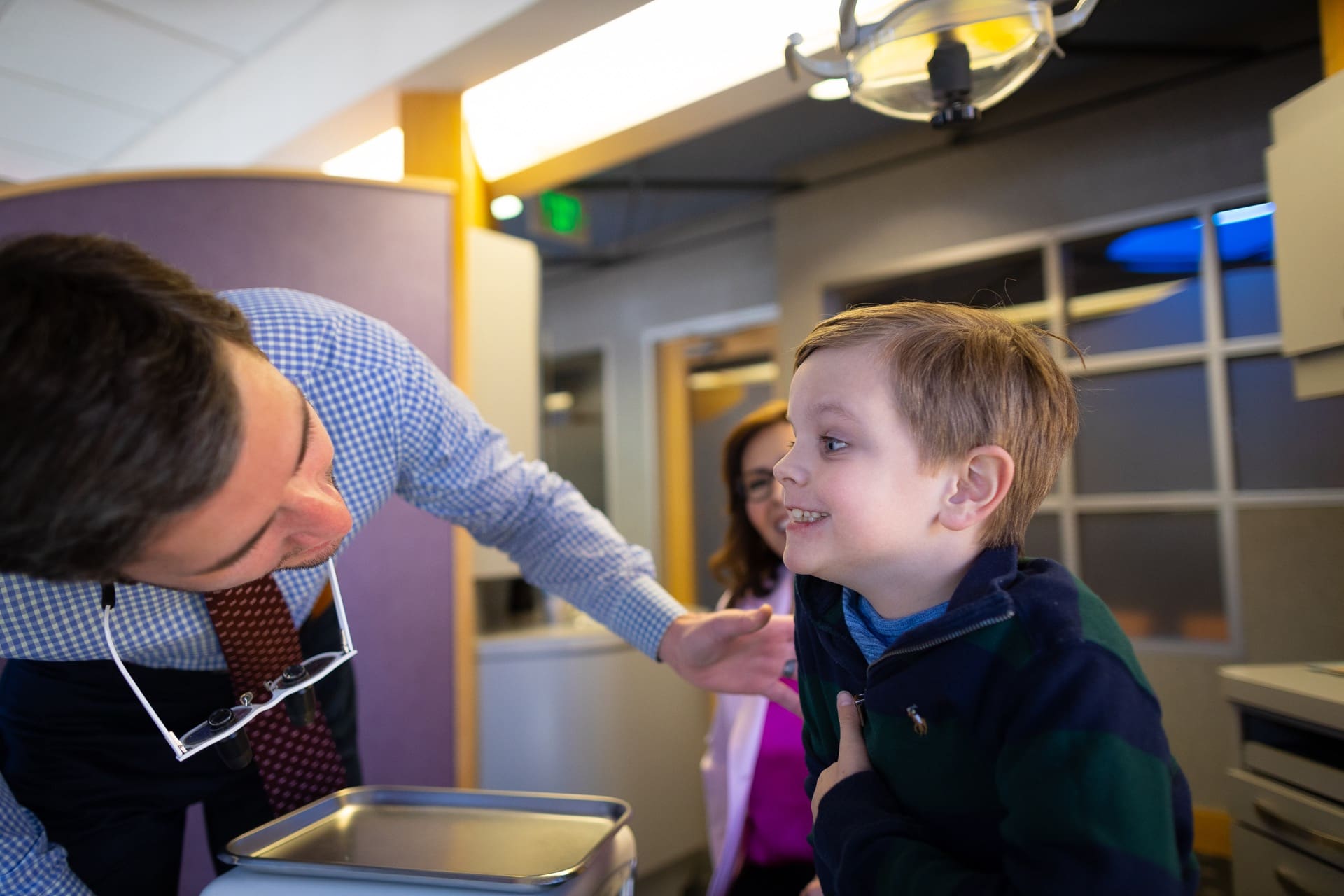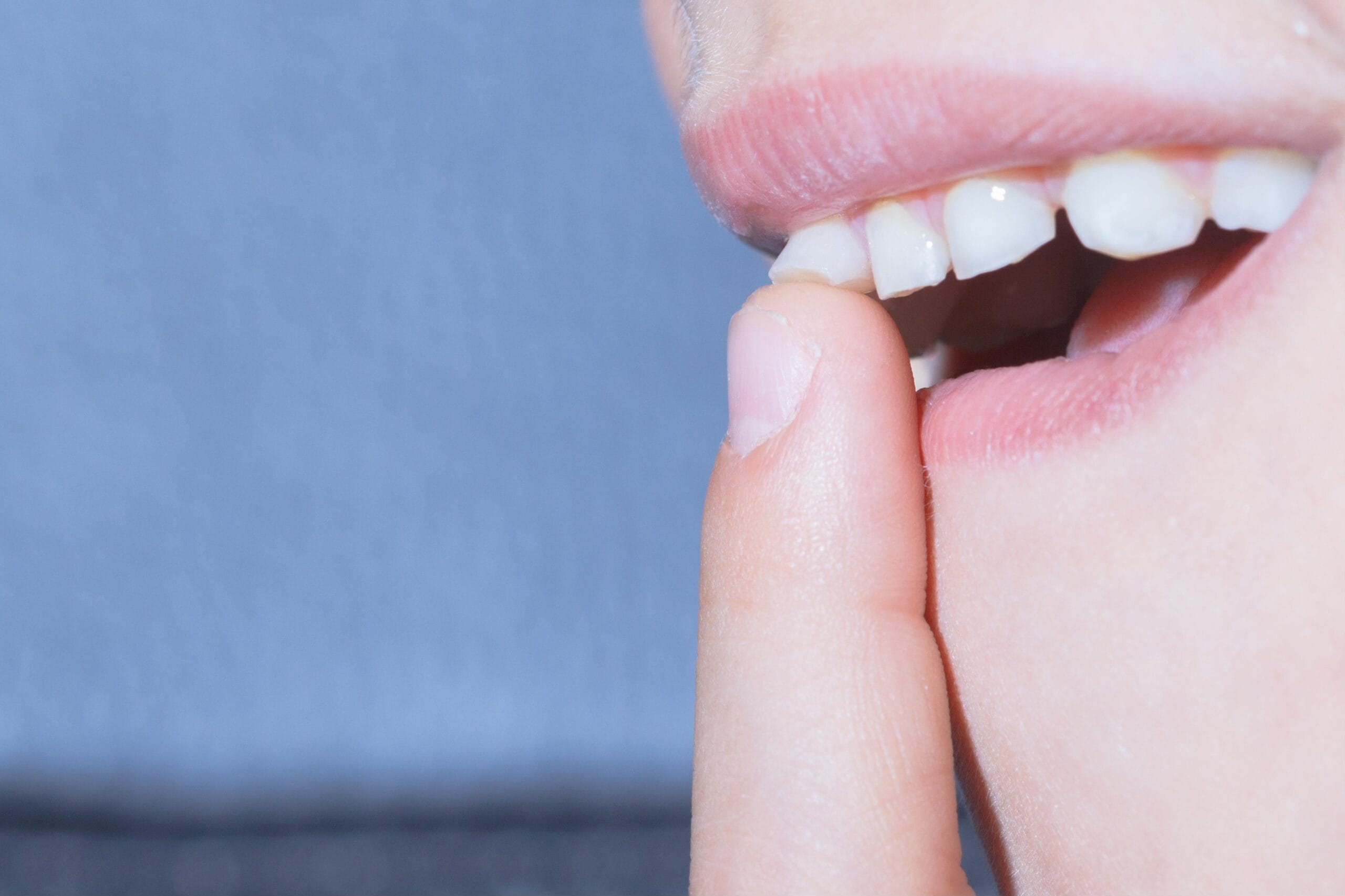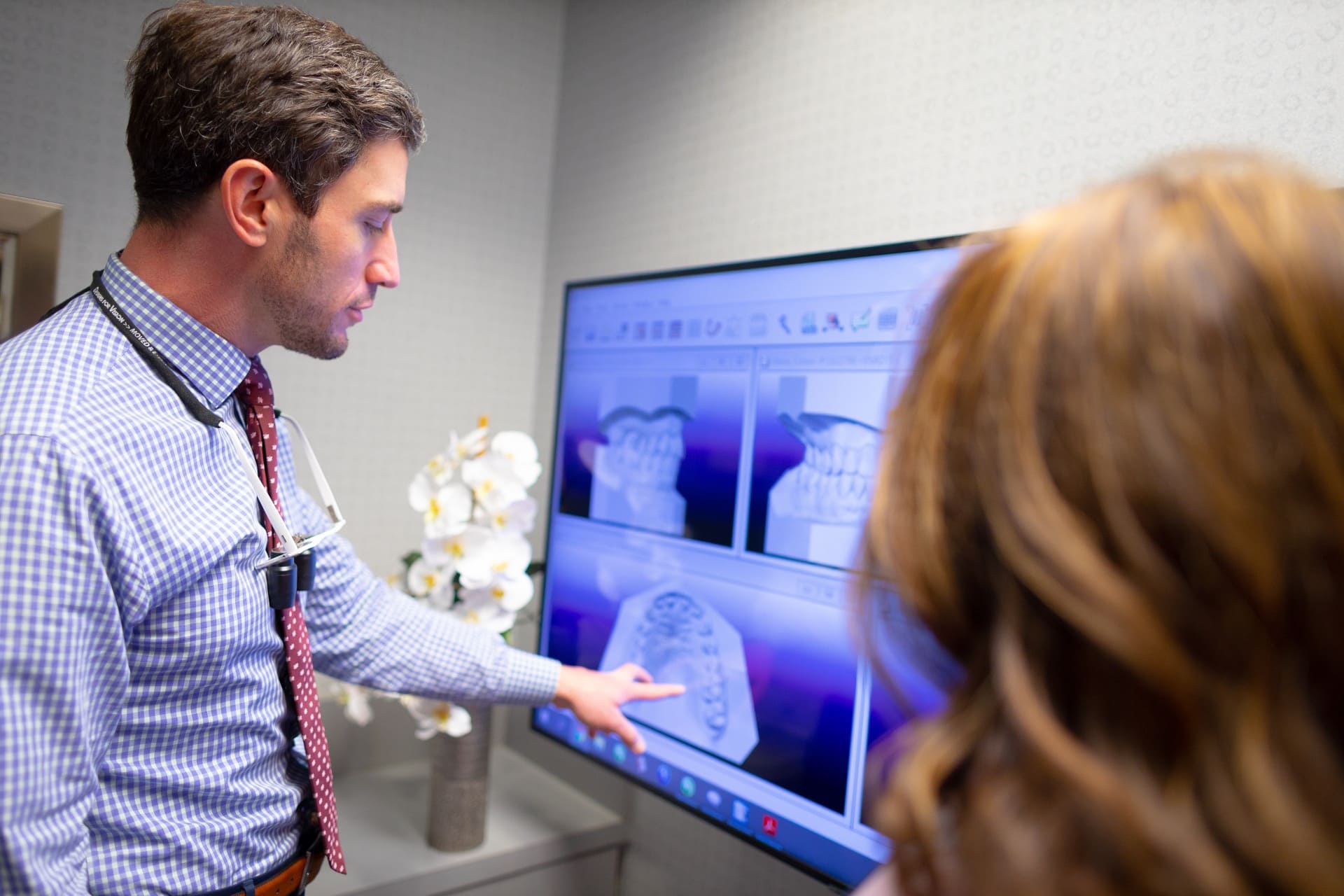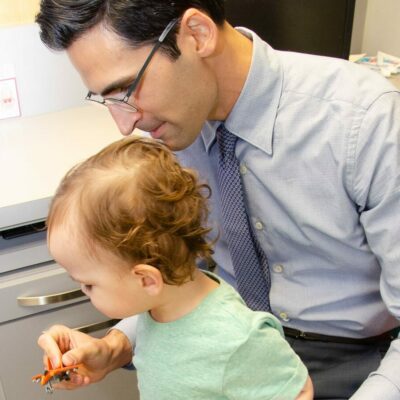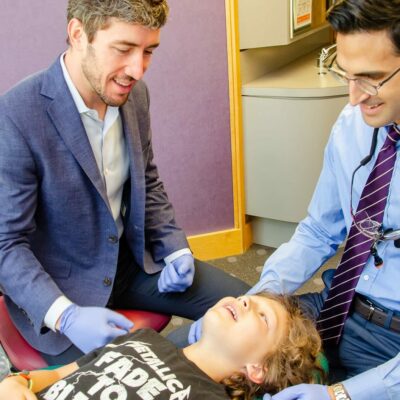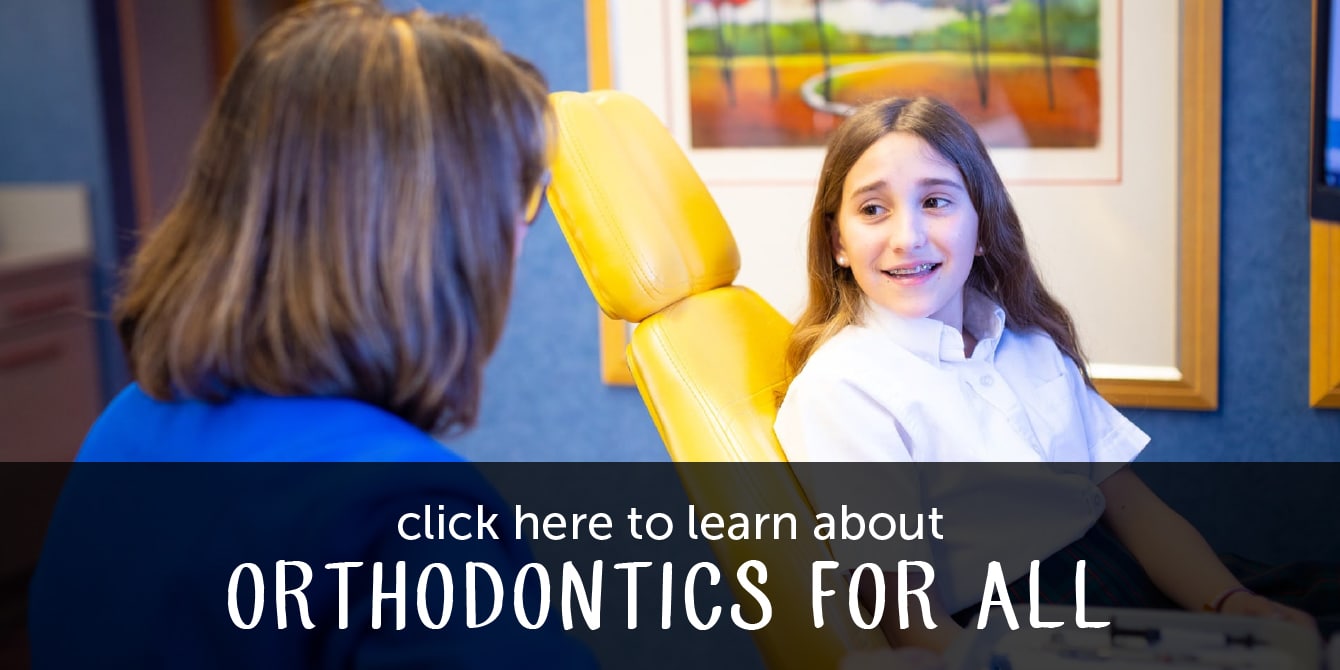As our children learn to crawl, walk, run and experience their physical environment, accidental falls and collisions occur, sometimes resulting in trauma to a tooth or multiple teeth. At the moment of the incident, all are in a highly emotional state so the initial assessment is key in deciding if professional help is needed.
The very first step is to control the bleeding by applying firm, direct pressure to the site with a clean cloth or gauze until bleeding is minimized. At that point you will have a clear visual to evaluate the mouth for soft tissue or tooth trauma. You may also apply a small ice pack (10 minutes on, 10 minutes off) to reduce potential swelling. Taking a photo or video of the injured area to send to a professional is quite helpful in determining the action that is needed. If teeth are affected, a pediatric dentist is your best choice for experienced care, but if it is clearly a deep laceration (usually lip involved), a trip to the ER for a doctor to suture the tissue would be recommended.
Baby Tooth Trauma
What to immediately look for at the moment of trauma:
- Cuts or lacerations involving the tongue, lips, cheeks or frenum tissues
- Loose teeth
- Teeth pushed up into their gums or back/forward of their normal position
- Chipped or broken teeth or teeth knocked out entirely
What to do if a tooth falls out from trauma:
If the baby tooth is completely knocked out, DO NOT push it back into the socket as that is recommended for permanent teeth only. That action can actually damage the permanent tooth bud developing above the baby tooth by pushing one into the other.
What to watch for in the future that could indicate signs of infection:
- Watch for a loosened tooth that does not tighten with healing (considering their age and if it was time for the tooth to be naturally lost).
- A fluid-filled, pimple-like swelling on the gums above the tooth that was injured. This typically happens from a month to even a year later. Take a quick look as you raise the lip to brush their teeth daily.
- Watch for pain expressed by your child such as “my tooth hurts” or the pain awakening them at night.
- After trauma to a tooth, color change may occur, and the tooth will be yellow or gray compared to the neighboring teeth. Typically this occurs two weeks or more post tooth trauma. It is like a bruise inside the tooth and may either lighten or progressively darken over time.
- *Note—Any of these should be brought to our attention for evaluation.
Permanent Tooth Trauma
When permanent teeth are involved, it requires a different mindset and approach. The immediate response is similar, but saving the tooth or repairing it to optimal health is much more time-sensitive. This might include re-implantation (putting it back into the tooth socket), bonding a significant broken fragment back onto the tooth or using composite materials to fill in the fractured space, creating a whole tooth once again. It might also involve stabilizing the tooth by anchoring it with a bracket and wire (braces) to an adjacent healthy tooth. Loose teeth in adults are also abnormal and should be brought to your dentist’s attention immediately.
What to look for at the moment of trauma:
- Cuts or lacerations of any soft tissue (lips, cheeks, tongue, frenums)
- Loose teeth
- Teeth out of normal position or pushed up into the gums
- Chipped or broken tooth or tooth knocked out entirely
What to do if a tooth falls out:
- Immediately call our office at 214-696-3082 and select the emergency option.
- Time is of the essence as the tooth must be re-implanted within 30-60 minutes of the trauma to increase the likelihood of saving the tooth.
- Find the tooth, pick it up only by the crown (white part), not touching the root. If it has dirt on it, rinse gently only with milk or saline solution.
- Then, the first choice is to push it up into the socket without concern for perfect positioning, as it can be turned by the dentist.
- The second choice is to put it back into their mouth placed in the pocket between their cheek and gums. Their natural saliva is the best place for the tooth to remain vital.
- Our third choice is to place it in a cup of milk (any type), contact solution or a nasal saline solution you might have on hand. Do NOT use tap or distilled water unless there is no other choice as it can affect the cells on the root you are trying to keep alive.
Possible outcomes for the future:
- You may notice discoloration/bruising of the involved teeth which may occur two weeks or more after the injury and possibly lighten over time.
- The injured tooth color may continue to darken as a sign of long-term damage.
- A soft food diet may be needed for five to seven days.
- A possible referral to an endodontist for follow-up may be needed.
Contact our office today!
Tooth trauma can be uncomfortable for you and your child, so we encourage you to think about scenarios, have a plan and materials collected (maybe a tooth emergency bag). Being prepared can truly calm the potentially traumatic moment. myKIDSdds offers support for dental emergencies as well as experience to address any issues related to your child’s dental health. Whether it is a stressful moment after trauma to a tooth or a simple question, do not hesitate to reach out as we are happy to hear from you!
Healthy Smile, Healthy Child
Of course, a beautiful smile begins with a healthy smile. Our team will help your child achieve good oral hygiene through regular cleanings and one on one education. Your little one will receive an oral hygiene score and coaching each time they visit us for a cleaning, cultivating a sense of responsibility and accomplishment while also building their confidence each time they improve their score. Don’t forget, a clean mouth promotes total body health and wellness too! This is why our doctors will screen for airway issues, talk about nutrition, eating habits, and much more. We want our patients to be empowered in the knowledge we provide to them on the health of their facial complex and how it relates to their overall systemic health. We are excited to partner with you throughout your child’s pediatric dental journey into orthodontics, and beyond!
